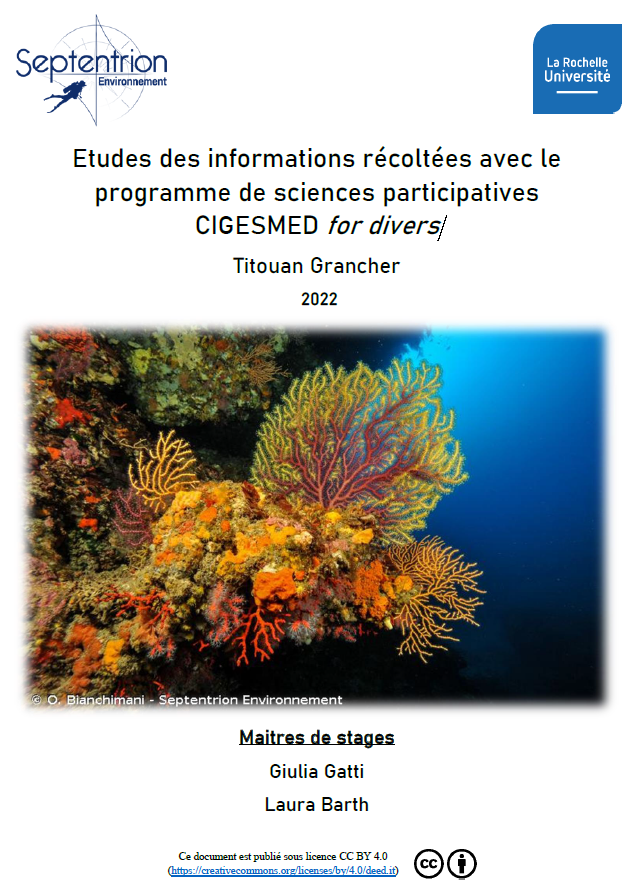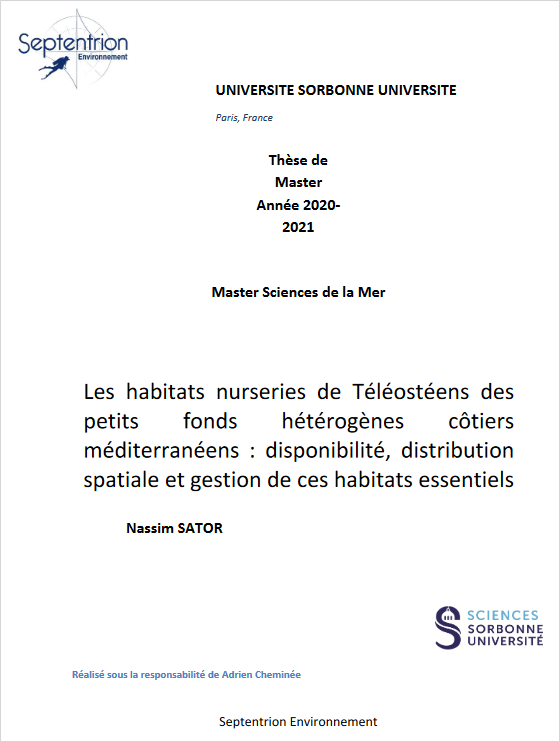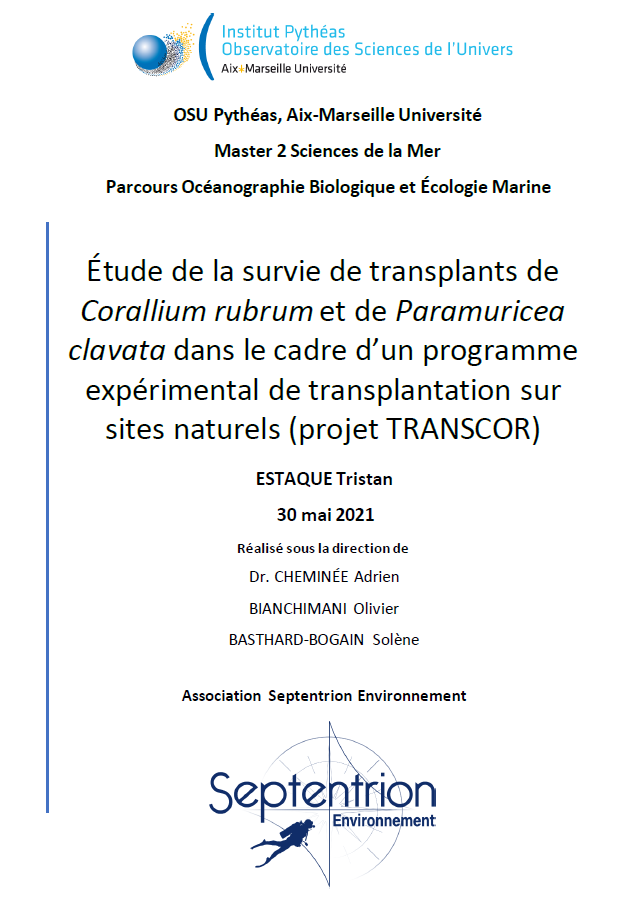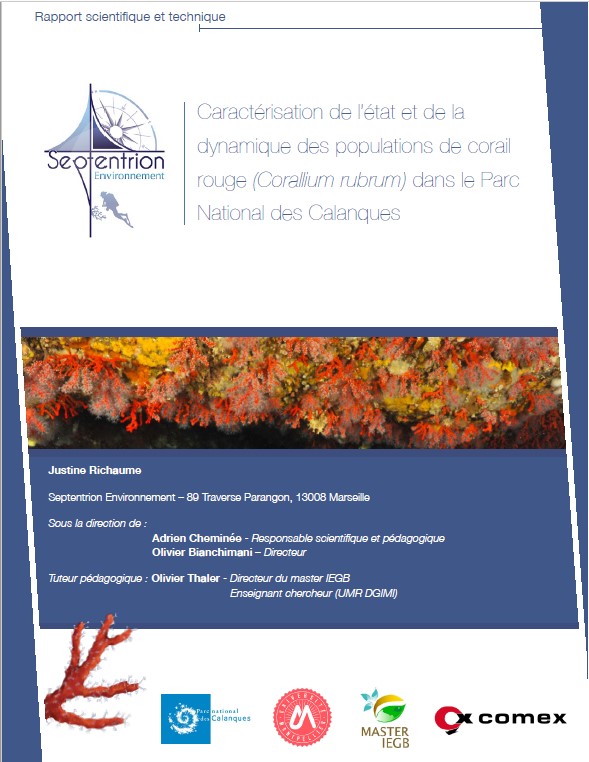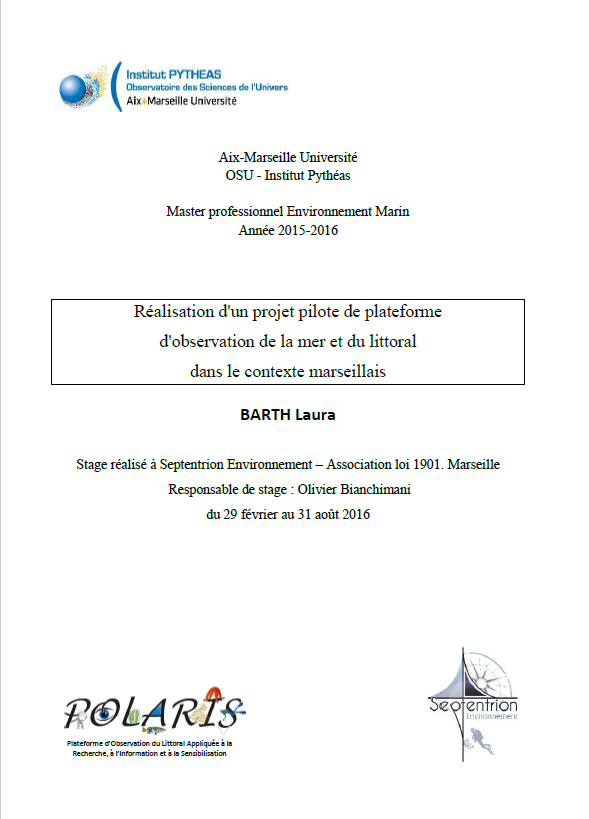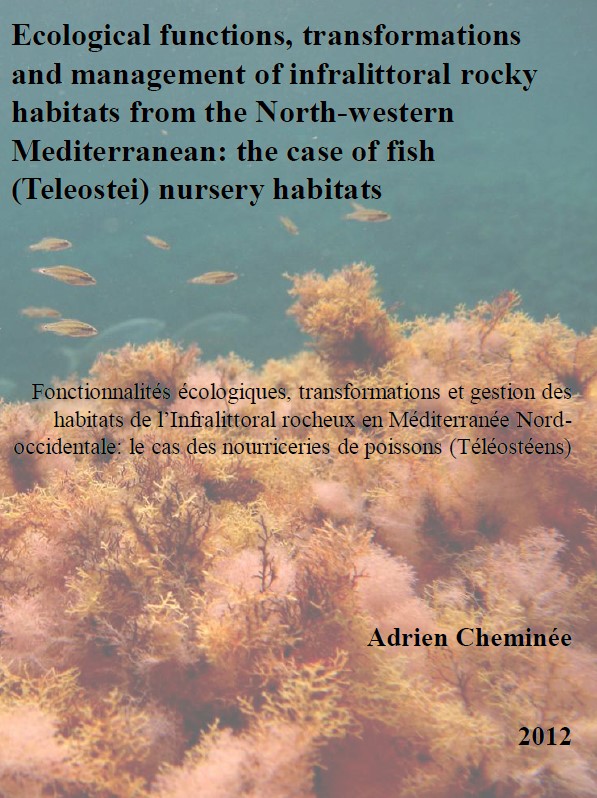Cheminée A.
The aim of this PhD was to better understand the characteristics and consequences of the transformations of Mediterranean infralittoral fish (Teleostei) nursery habitats, in order to gather useful knowledge for management of coastal areas in Mediterranean regions. Among the seascape mosaic, Cystoseira forests, a threatened macrophytes-formed habitat, displayed higher densities of fish juveniles (notably Labridae and Serranidae) than alternate states of rocky bottoms photophilic biocenosis, namely Dictyotales and Sphacelariales bushland and barren grounds. The relatively higher nursery value of Cystoseira forests (for Symphodus spp.) and of the shallow heterogeneous blocks and pebbles gentle slopes (for Diplodus spp.) where consistent through space at both local (1 km) and regional (20 km) scales, although juvenile densities varied significantly in space between sites for a given nursery habitat. The spatial variability of juvenile densities, both across various habitats and among Cystoseira forests was notably related to habitat tri-dimensional structure (heterogeneity and complexity); this structure provided refuges for juveniles and influenced namely predation success of their predators. This experimental and observational study demonstrated that habitat human-induced transformations, such as forest fragmentation and cover density decrease critically reduced their nursery value for coastal fishes. Our results suggest that the fish productivity virtually lost in areas where forests have already disappeared may be considerable. Finally, these essential habitats were scarce and not homogenously distributed along the coast: in the case of Diplodus spp., less than 10% of the studied rocky shores displayed nursery habitats.
Furthermore, the present work highlighted that the current design of management measures did not take into account the spatial distribution of these nursery habitats and the connectivity between all essential habitats at each life stages. A conceptual scheme aiming at adopting such “seascape approach” is proposed, in order to better target conservation efforts and guarantee coastal fish assemblages’ replenishment.
